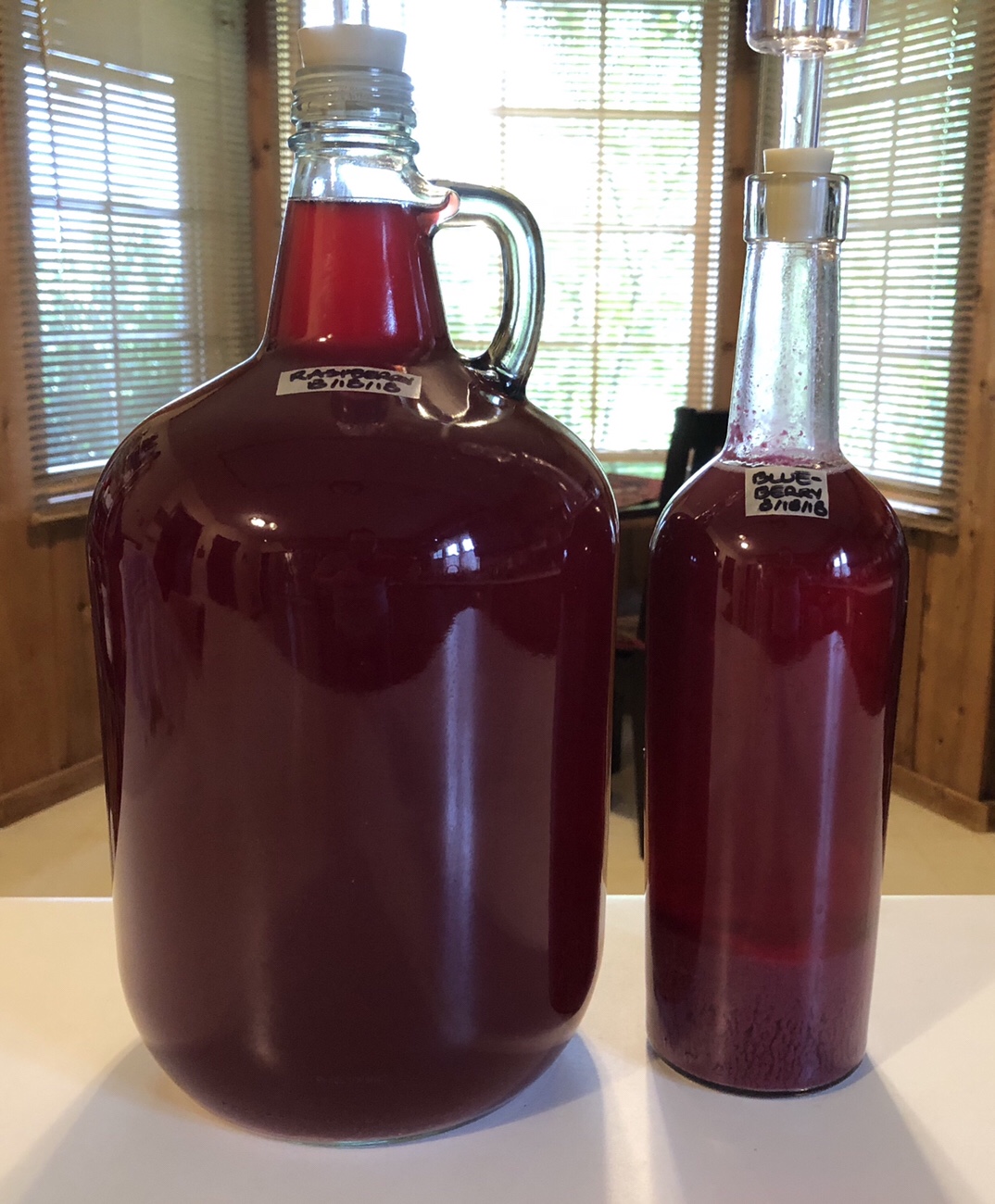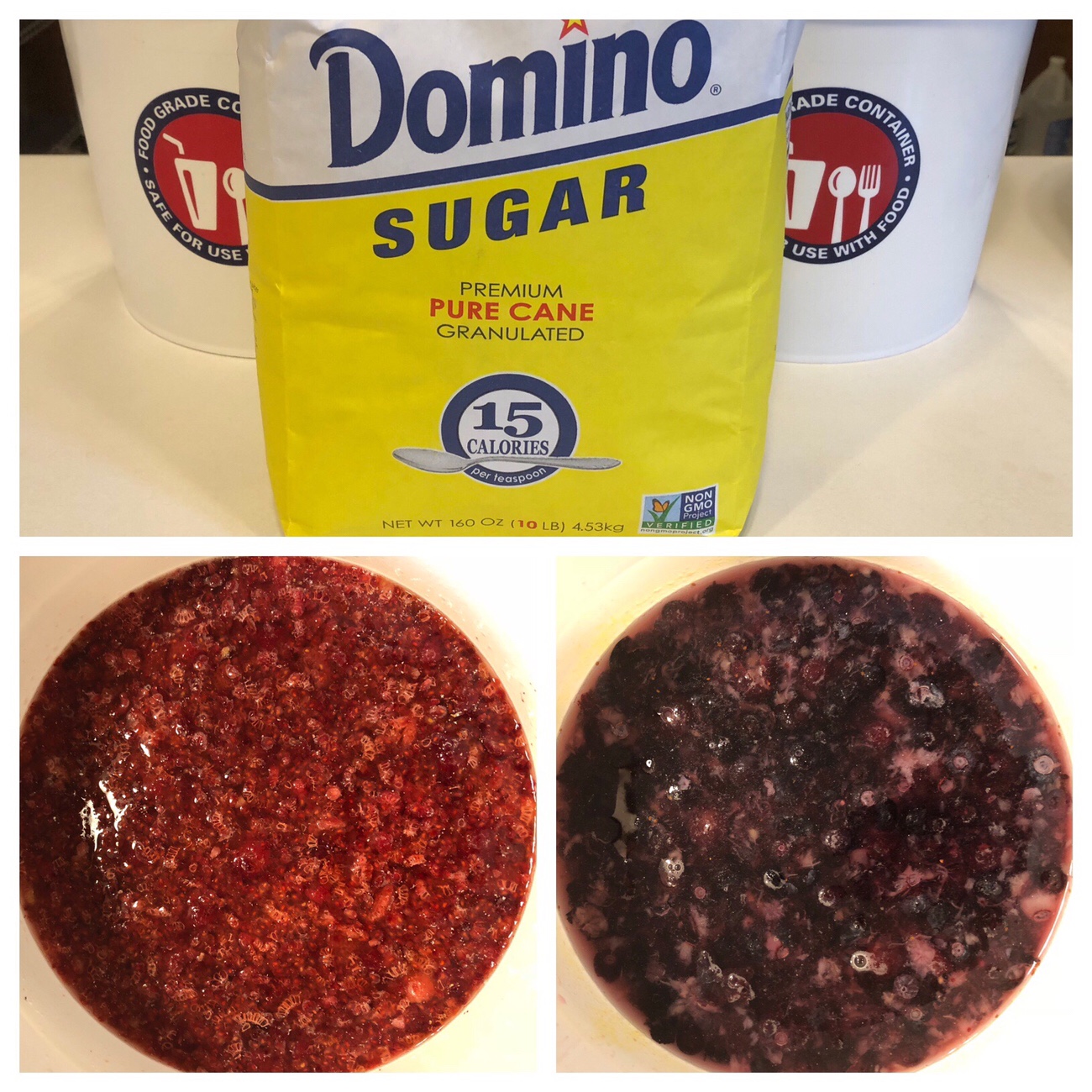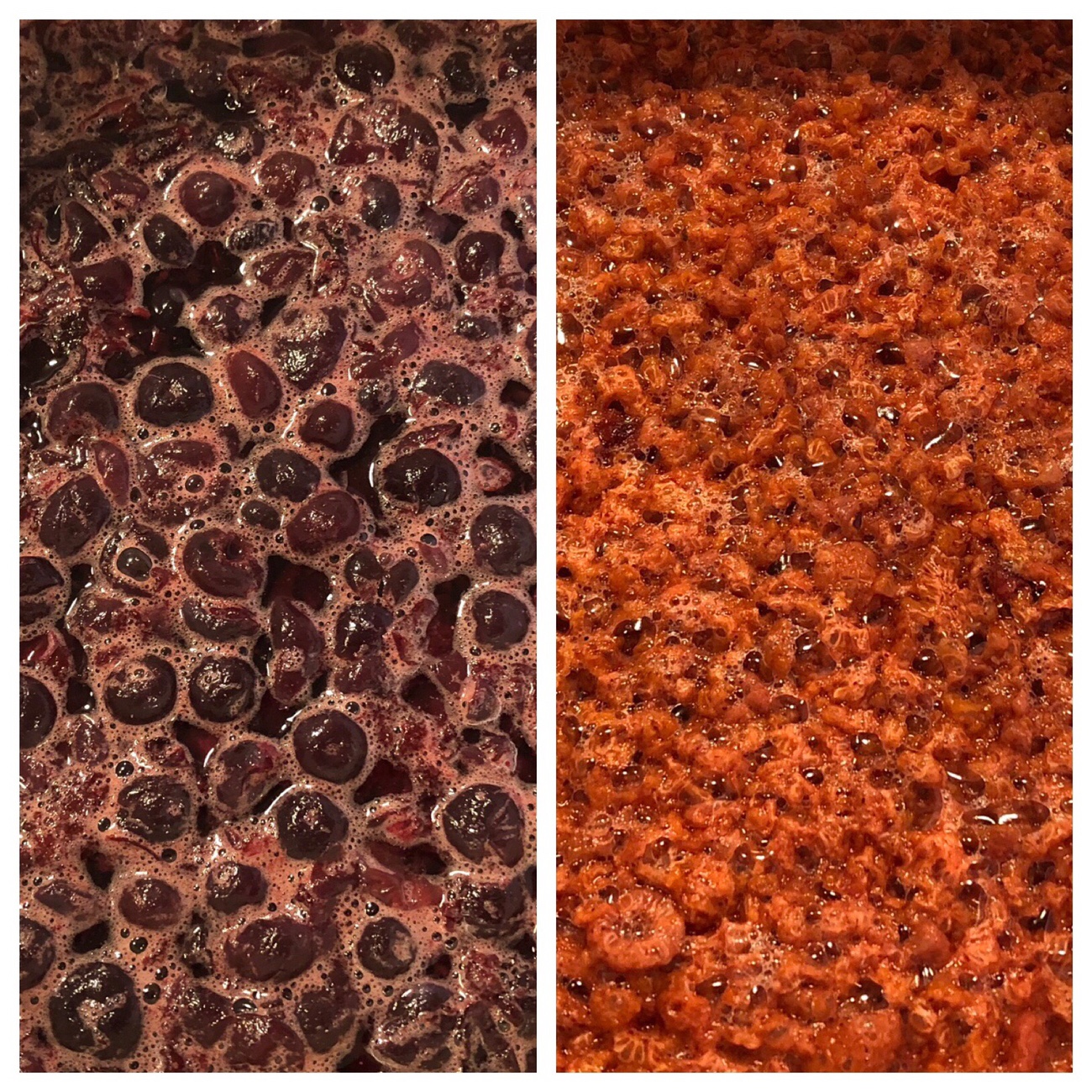
Berry wines are easy (especially when made with frozen berries) and rewarding: they’re – almost without fail – delicious and flavorful. With a big package of frozen organic raspberries as well as a bag of organic frozen blueberries in the freezer, it felt like it was time to start some berry wines!
It’s difficult to go wrong with berry wine, but I usually just make mixed berry, containing some combination of blackberry, strawberry, raspberry, blueberry, and cherry. These are generally very forgiving and ready to drink young (both excellent attributes, IMO). I haven’t yet tried a “pure” blueberry or raspberry yet, though, so this should provide some useful information about the flavor profiles of these berries in wine.
The process is straightforward: open bags of frozen berries and pour into primary fermenter. Sugar is dissolved in hot water, then poured over the berries. Additional dechlorinated water, acid, pectic enzyme, yeast nutrient, and a crushed Campden tablet is added. After 24 hours has elapsed, the yeast is pitched. The must is stirred daily.

After 5 days, I transferred the must into a secondary fermenter with airlock, where it will continue its quiet transformation. Surprisingly, both wines are nearly the same color (the blueberry is in a green glass jug, so you can see the color better in the clear wine bottle), though the blueberry has a more active fermentation than the raspberry.

The fun part: since I had crushed the berries in the primary fermenter to extract as much flavor as possible, they were fairly challenging to strain out of the must without making a colorful mess on the counters. I think I’ll use a mesh wine bag to contain the fruit pulp next time, partly to make racking easier and partly to preserve the yeast slurry for reuse (berry adds nice flavor and color to other wines). And the spent berries? The fowl enjoyed the yeasty berry sludge goodness, of course.
I’ll check back on these wines in a month and rack to a clean carboy, if needed. I’m expecting clean, bright fruit flavors from both – we’ll see if that comes to pass at tasting time!
Interested in making your own? I used the recipes in Raymond Massaccesi’s Winemaker’s Recipe Handbook, an inexpensive but very useful resource for making one gallon batches.
